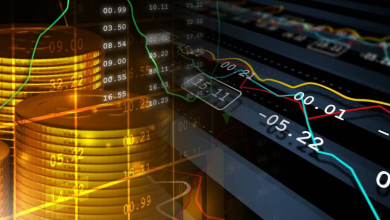Technical Analysis

GET READY TO START YOUR EXCITING JOURNEY (Section 3)
Technical Analysis and Trading Strategies
Technical analysis is the study of past market data, primarily price and volume, to forecast future market movements. It is one of the most widely used methods for analyzing financial markets, including the Forex market. Technical analysis focuses on identifying patterns and trends in price charts and using these patterns to make trading decisions. Trading strategies based on technical analysis can be used to identify entry and exit points, manage risk, and maximize profits.
There are several popular technical analysis tools that Forex traders use to analyze market data. These tools include charts, trend lines, moving averages, and indicators such as Relative Strength Index (RSI) and Moving Average Convergence Divergence (MACD). By using these tools, traders can identify patterns and trends in price charts and make informed trading decisions.
In addition to technical analysis, Forex traders use a range of trading strategies to maximize their profits and manage risk effectively. These strategies include scalping, swing trading, and trend trading, among others. Each strategy has its unique set of rules and techniques, and traders can choose the strategy that best suits their trading style and risk tolerance.

OVERVIEW OF TECHNICAL ANALYSIS AND ITS IMPORTANCE IN FOREX TRADING
Technical analysis is an essential tool for Forex traders to understand and forecast market movements. By analyzing past market data, traders can identify trends and patterns that provide insight into future price movements. Technical analysis tools, such as charts and indicators, are used to identify these trends and patterns.
One of the primary advantages of technical analysis is that it allows traders to make informed trading decisions based on objective data. For example, traders can use chart patterns, such as support and resistance levels, to identify potential entry and exit points. They can also use technical indicators, such as Moving Average Convergence Divergence (MACD) and Relative Strength Index (RSI), to confirm trend direction and momentum.
Another benefit of technical analysis is that it can help traders manage risk more effectively. By identifying potential support and resistance levels, traders can set stop-loss orders to limit their losses if the market moves against them. They can also use technical indicators to monitor market conditions and adjust their trading strategies accordingly.
Overall, technical analysis is a powerful tool for Forex traders that can help them make informed trading decisions and manage risk effectively. It is important to have a solid understanding of technical analysis concepts and tools to develop a profitable trading plan and succeed in the dynamic Forex market.
TYPES OF TECHNICAL INDICATORS AND THEIR USE IN FOREX TRADING
There are many technical indicators used in Forex trading, and they can be categorized into two types: trend indicators and momentum indicators. Trend indicators help traders identify the direction and strength of a trend, while momentum indicators measure the speed and strength of market movements.
Examples of trend indicators include Moving Averages, Bollinger Bands, and Ichimoku Kinko Hyo. Moving averages smooth out price fluctuations and provide a clearer picture of the trend direction. Bollinger Bands use moving averages and standard deviations to create a range around the price, which can be used to identify potential support and resistance levels. Ichimoku Kinko Hyo is a versatile indicator that can be used to identify trends, momentum, and potential support and resistance levels.
Momentum indicators, on the other hand, include Relative Strength Index (RSI), Moving Average Convergence Divergence (MACD), and Stochastic Oscillator. RSI measures the strength of a trend by comparing the average gains and losses over a specified period. MACD measures the difference between two moving averages and can be used to identify trend direction and momentum. Stochastic Oscillator measures the closing price relative to the range of prices over a specified period and can help identify potential overbought or oversold conditions.
Technical indicators can be used in combination with other analysis tools to develop a trading strategy that fits a trader’s unique trading style and risk tolerance. It is important to note that no single indicator is perfect, and traders should use multiple indicators and analysis tools to make informed trading decisions in the dynamic Forex market.
DEVELOPING A SUCCESSFUL TRADING STRATEGY, INCLUDING TREND FOLLOWING, SWING TRADING, AND SCALPING
Developing a successful trading strategy is key to achieving profitability in Forex trading. There are several trading strategies that traders can use to capitalize on market movements and make informed trading decisions. Three popular trading strategies are trend following, swing trading, and scalping.
Trend following is a strategy that involves identifying the direction of a trend and entering trades in the same direction. Traders using this strategy use technical indicators to identify potential entry and exit points and hold positions for an extended period to capitalize on the trend. For example, if the price of a currency pair is in an uptrend, a trader might look for opportunities to buy the pair and hold the position until the trend changes.
Swing trading is a strategy that involves holding positions for a few days to a few weeks to capitalize on short-term market movements. Traders using this strategy look for opportunities to buy or sell at support or resistance levels, and they use technical indicators to confirm potential entry and exit points. For example, if the price of a currency pair has reached a resistance level, a trader might look for opportunities to sell the pair and hold the position until the price reaches a support level.
Scalping is a strategy that involves making multiple trades over a short period, typically a few seconds to a few minutes. Traders using this strategy look for small price movements and use technical indicators to identify potential entry and exit points. For example, if the price of a currency pair has reached a support level, a trader might look for opportunities to buy the pair and hold the position for a few seconds to capitalize on a small price movement.
Traders should choose a trading strategy that fits their trading style and risk tolerance. It is also important to backtest and refine the strategy to ensure its effectiveness in different market conditions. A successful trading strategy requires discipline, patience, and a willingness to adapt to changing market conditions.




